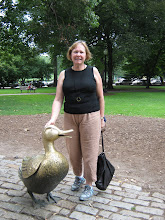




I think Universal Children's Day is a good time to remind children that not every child in the world has a life like theirs. I like to start with A Life Like Mine, that book from Unicef that compares people's water consumption, resource usage, education etc all over the world. The children in Year 2 look closely at water as a resource so the statistics given in this book always shock them. David J. Smith's If the World Were a Village also puts their life in perspective. For younger children Kathryn Cave's W is for World is a good place to start. So is Kate Petty's series of books Around the World, which are published in association with Oxfam , because they highlight similarities while showing differences. They do this by photographing children from all over the world doing similar things. There are six books: Playtime; Home; Hair; Bicycles; Our Animals and At School. Alternatively, you could use a book to reiterate the Rights of the Child (see For Every Child or We Are All Born Free) and then choose one as a focus such as education and read Jeanette Winter's Nasreen's Secret School which enables children to see the ramifications of the lack of girls' education in Afghanistan.

No comments:
Post a Comment